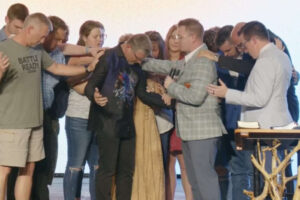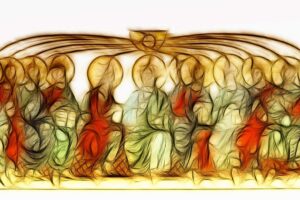When you reconstruct the medical aspects of Jesus’ crucifixion, the result is a brutal, vivid picture of what Jesus endured to save people from sin.
In 1986, The Journal of the American Medical Association published a series of articles examining the practice of torture. The first piece was entitled “On the Physical Death of Jesus Christ,” by William D. Edwards, M.D.; Wesley J. Gabel, M.Div.; and Floyd E. Hosmer, M.S., AMI.
“The article was an account of perhaps the most influential single event of torture in history with physiologically sound analysis showing the horrifying pain of a common ancient Roman punishment,” editor George Lundberg later wrote in defense of the controversial content.
Drawing on the biblical account of the crucifixion, archaeological evidence and historic documents, combined with modern study, the article aimed to “reconstruct the probable medical aspects of this form of slow execution” (1460). The result was a brutal, vivid explanation of what Jesus endured to save people from sin.
An Excruciating Death
This is what we did to the God of the universe, as described by the article:
- “Although the Romans did not invent crucifixions they perfected it as a form of torture and capital punishment that was designed to produce a slow death with maximum pain and suffering” (1458).
- “For scourging, the man was stripped of his clothing, and his hands were tied to an upright post. The back, buttocks, and legs were flogged either by two soldiers (lictors) or by one who alternated positions. The severity of the scourging depended on the disposition of the lictors and was intended to weaken the victim to a state just short of collapse or death” (1457).
- “As the flogging continued, the lacerations would tear into the underlying skeletal muscles and produce quivering ribbons of bleeding flesh” (1457).
- “When the soldiers tore the robe from Jesus’ back, they probably reopened the scourging wounds” (1458).
- “The driven nail would crush or sever the rather large sensorimotor median nerve. The stimulated nerve would produce excruciating bolts of fiery pain in both arms” (1460).
- “Adequate exhalation required lifting the body by pushing up on the feet and by flexing the elbows and adducting the shoulders. However, this maneuver would place the entire weight of the body on the tarsals and would produce searing pain. Furthermore, flexion of the elbows would cause rotation of the wrists about the iron nails and cause fiery pain along the damaged median nerves” (1461).
- “Since speech occurs during exhalation, these short, terse utterances [Jesus’ words from the cross] must have been particularly difficult and painful” (1462).
In short, “Death by crucifixion was, in every sense of the word, excruciating (Latin, excruciatus, or ‘out of the cross’)” (1461). But Jesus’ violent, painful, sacrificial, courageous, humble death is not only the most horrific act of sinful man the world has ever known—it’s also the greatest act of love demonstrated by our good and righteous God.
Not a Helpless Victim
It is tempting to look upon the crucified Jesus with condescending pity and feel sorry for His brutal suffering. Yet out of respect for Jesus’ dignity, we must resist that temptation, because Jesus did not die as yet another helpless victim. Rather, with the cross on the horizon of His life, Jesus said that no one would take His life from Him in defeat, but rather He would give it and take it up again in victory (John 10:18).
One witness to these astounding events was a young man named John, who helps us understand Jesus’ death as an act of love: “In this is love, not that we have loved God but that he loved us and sent his Son to be the propitiation for our sins” (1 John 4:10, ESV).
Happy Easter.
Mark Driscoll is the founding pastor of Mars Hill Church, based in Seattle. He is the author of more than 15 books, including his latest, A Call to Resurgence: Will Christianity Have a Funeral or a Future?
See an error in this article?
To contact us or to submit an article



















